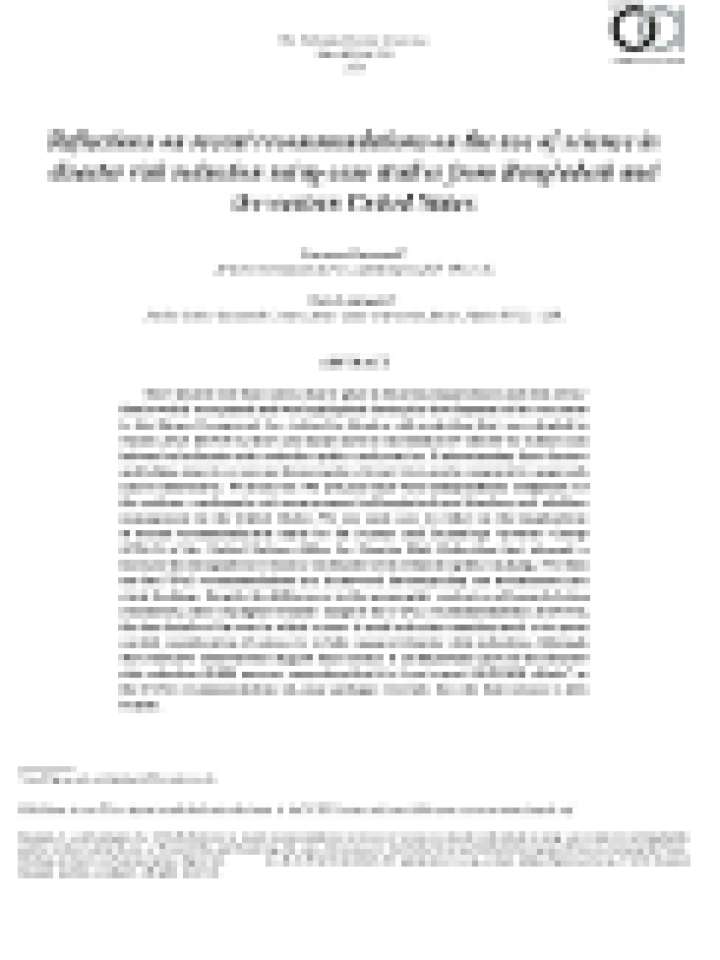Reflections on recent recommendations on the use of science in disaster risk reduction using case studies from Bangladesh and the western United States
GSA Special Papers v.520, March 2016, doi:10.1130/2016.2520(27)
This paper focuses on two projects: earthquake risk management in Bangladesh and flooding and wildfires management in the United States. It reflects on the implications of recent recommendations made by the Science and Technology Advisory Group (STAG) of the United Nations Office for Disaster Risk Reduction that attempt to increase the integration of science in disaster risk reduction policy making. It then uses the STAG recommendations as a framework for integrating an independent case study findings.
Despite the differences in the geographic contexts and hazards being considered, these examples broadly support the STAG recommendations. However, the fine details of the way in which science is used in decision making need to be given careful consideration if science is to fully support disaster risk reduction. Although these collective observations suggest that science is an important part of the disaster risk reduction (DRR) process, suggesting that it is “key to post-2015 DRR efforts” as the STAG recommendations do, may perhaps overstate the role that science is able to play.
Explore further
